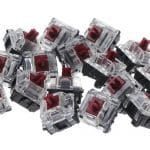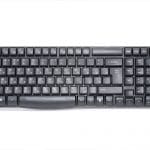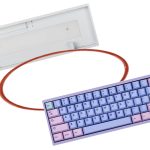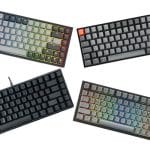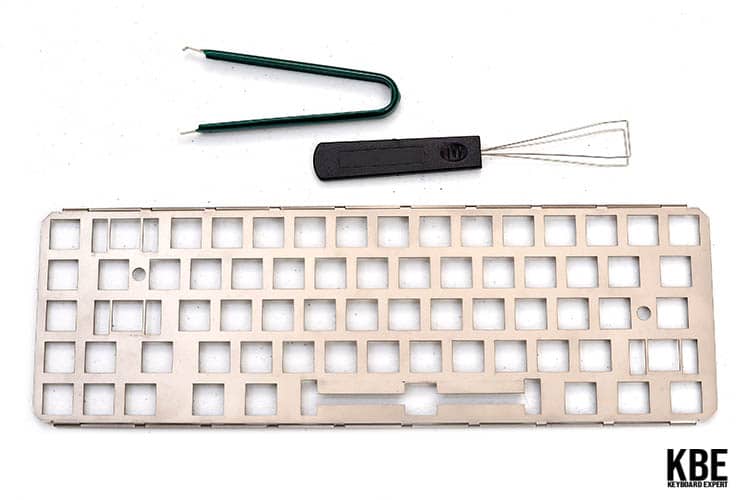
One of the most important parts of any keyboard build is the plate. It serves several key functions and is a major factor in determining the overall sound of your keyboard. There are many different types of plates to choose from and experiment from.
Custom keyboard plates generally come in different materials. The most common ones include aluminum, brass, steel, FR4, POM, and polycarbonate. Each material affects the typing experience and acoustics in different ways. The best plate material for your build highly depends on your personal preference as well as other factors, such as your case material.
In this article, we will be talking about the different plate materials as well as how they affect typing feel and the sound of your keyboard. We will also be quickly discussing the different plate mounting options that are used by mechanical keyboards. Keep on scrolling to find out more.
What is a Keyboard Plate?
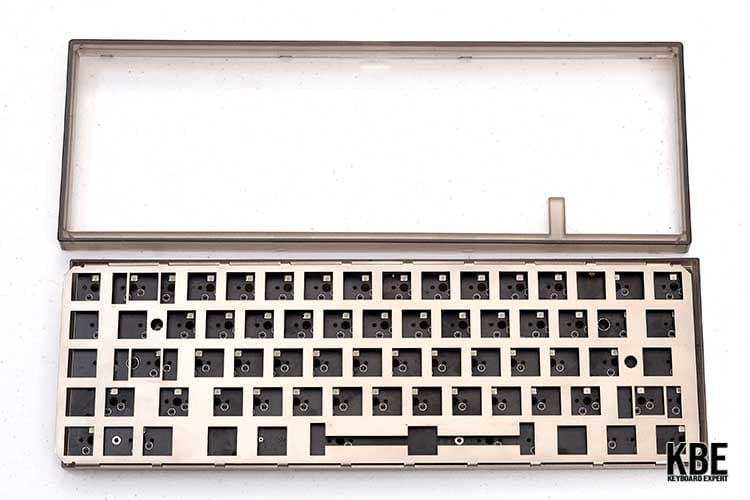
The plate is the component that helps hold the switches in place. They also add rigidity and stability to your switches and can also affect the typing feel of your keyboard.
Additionally, the plate allows your custom keyboard to have different mounting styles. Again, these will ultimately affect the typing feel of your keyboard. We will be talking more about these mounting styles in their own dedicated section.
Keyboard Plate Materials
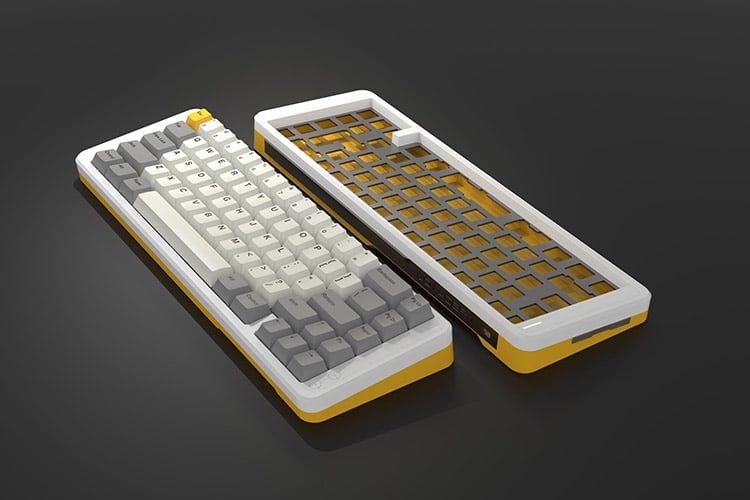
In the past, there were only a handful of plate materials that were available. They were also not easily removable and therefore could not be played around with. These days, you not only have tons of plate materials but also have the option to quickly swap them out for other plate materials.
The common plate materials include aluminum, brass, steel, FR4, POM, polycarbonate, and carbon fiber. Aluminum, brass, and steel plates give your keyboard a more rigid feel but also make the typing experience stiffer. It also adds ping and other unwanted noise for each keypress.
POM, polycarbonate, and FR4, on the other hand, give you a softer typing experience. However, some materials such as POM may not be readily available and may need to be custom-made by a third-party manufacturer.
Which Plate Material is the Best for My Keyboard?
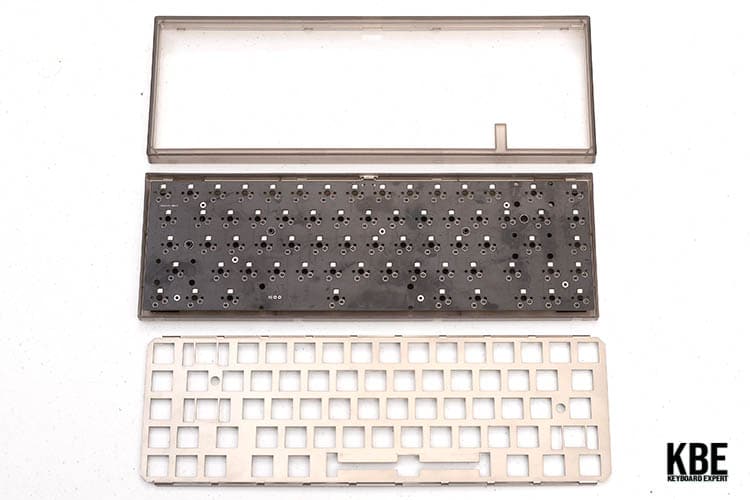
Just like with everything else in this hobby, there is no such thing as a “best option.” Each plate material will impact your keyboard in different kinds of ways. And due to the fact that different keyboards have different components, there is no sure way of telling which plate material will be the best.
Brass, for instance, is not preferred by most enthusiasts due to the reasons that we have mentioned earlier. However, some high-end keyboards that use brass plates still manage to get high-quality results.
Likewise, some entry-level boards won’t suddenly sound like endgame boards when paired with a POM or polycarbonate plate. So overall, it will be on a case-to-case basis.
With that said, most custom keyboards allow you to try out different plate materials. We encourage you to try out different plate materials to see which fit your personal preferences.
What are Half Plate and Plateless Options For Keyboards?
Another trend that has been gaining traction in the keyboard community is the use of half plate and plateless builds. Half plate builds eliminate the plate material on the alpha keys but still maintain the plate material on the modifiers. The purpose of using a half plate build is to allow the switches to sound naturally without the influence of a plate.
It also allows for a more bouncy typing experience since there is no plate in between the PCB and the switches. However, there is still plate material in the modifiers in order to maintain stability in your keyboard.
You can also go one step further by going completely plateless. These have the same benefit as a half plate option but will allow your keyboard to feel more consistent.
Take note that not all keyboards will allow you to go half plate or plateless. Your PCB must also be compatible with 5-pin switches/PCB mount switches as well as PCB mount stabilizers.
Keyboard Plate Mounting Styles
In addition to having different plate options, you also get different plate mounting styles. Older mechanical keyboards typically only had tray mounting. However, newer mechanical keyboards have started incorporating top mount, tray mount, and gasket mount. Let us go through each one of those in more detail.
Tray Mount
Tray mount is the most common plate mounting style for prebuilt and more budget-priced keyboards. For this mounting style, the plate and the PCB are mounted to the bottom of the case via different standoffs. This is the mounting style that you will see with the GK series boards and KBDFans’ Tofu keyboards.
The main downside of tray mount boards is that they will inevitably have a stiff typing experience. Also, the sound and feel of your keyboard will generally not feel consistent, especially in the areas where the standoffs are.
But with that said, tray mount boards are compatible with lots of aftermarket cases due to their simple design. There are also lots of mods, such as the O-ring mod, that can be done to make the typing experience softer.
Top Mount
Top mount has become the default mounting style for midrange and higher-end keyboards. As its name suggests, the PCB and plate are mounted to the upper portion of the case. This creates a fairly consistent feeling and sounding typing experience.
Keyboards that utilize this mounting type generally have a more complex case. Unlike tray mount keyboards, the case of top mount keyboards usually has two parts which are the top and the bottom.
Of course, top mount boards still offer room for mods. The Savage65, for instance, allows you to install O-rings which turn your top mount keyboard into a burger mount keyboard. Burger mount (modified top mount) usually modifies the sound of your keyboard and makes the typing experience softer.
Bottom Mount
Bottom mount is the exact opposite of top mount. Instead of mounting to the top portion of the case, the PCB and plate are mounted to the bottom of the board. However, unlike tray mount, there are no standoffs that can make the typing experience stiffer.
This mounting style isn’t as common as top-mount or tray mount. However, this mounting style does not have too many flaws and can be seen on higher-end custom keyboards.
Gasket Mount
Gasket mount has been gaining tons of traction in the custom keyboard hobby. Unlike the previous mounting styles that we have talked about, gasket-mounted keyboards are quite unique. With this mounting style, gasket materials (such as Poron gaskets) are used to isolate the plate and PCB from the case.
This allows for a softer and more bouncy typing experience. The only downside with this mounting style is that different companies implement this mounting style differently. This means that one gasket-mounted keyboard can sound and feel completely different from another gasket-mounted board.
And unlike top mount keyboards, most manufacturers are still experimenting with how to best implement this mounting style. But, of course, fresh ideas such as these help keep the hobby interesting.
Which Plate Mounting Style is the Best?
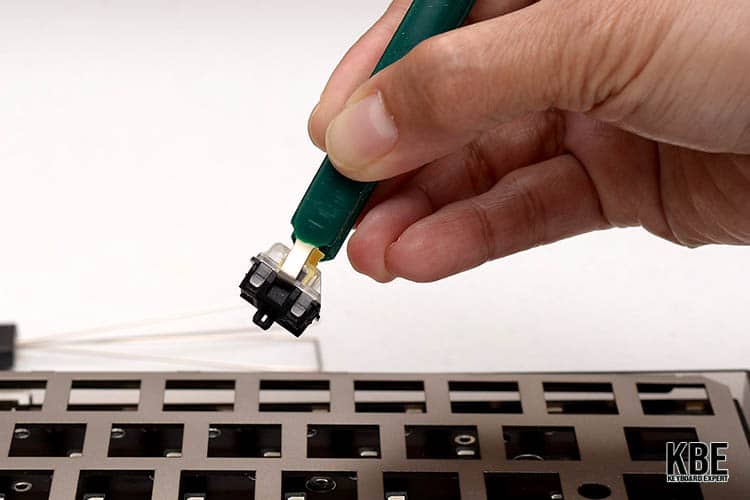
Just like with plate materials, there is no “best” plate mounting style. It all depends on how the keyboard is put together and whether or not a keyboard utilizes its intended mounting style properly. But with that said, some mounting styles are clearly inferior.
As we have discussed earlier, tray-mounted keyboards are generally not preferred due to their stiffer typing experience. They will almost always not sound as good right out of the box and will certainly require modding.
If you are building a custom keyboard, we highly recommend going for a top mount board or a gasket mount board. But again, each board will be different, so we highly advise properly researching the keyboard model that you are interested in.

The KBE team is dedicated to sharing our knowledge and creating useful resources about computer keyboards. This article was written as a team collaboration, combining our knowledge and years of experience using, building and modding keyboards. Meet the team here.
